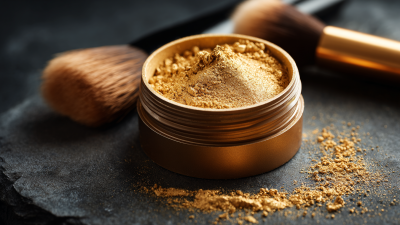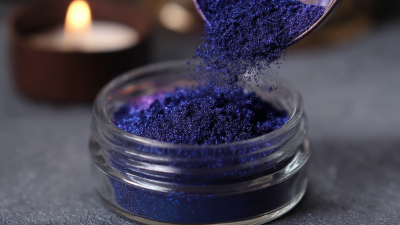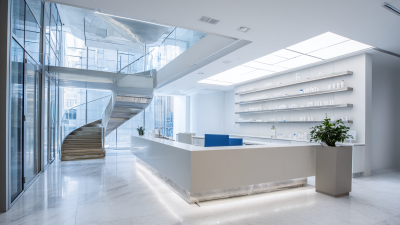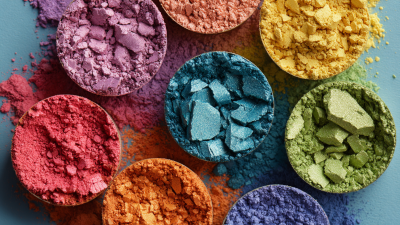In the realm of artistry and design, the versatility and beauty of Pearl Pigment have become indispensable tools across various industries. From cosmetics to automotive finishes, Pearl Pigment offers an innovative way to create stunning visual effects that captivate and inspire.

This blog delves into the mastery of Pearl Pigment application techniques, showcasing how these shimmering colors can transform materials and elevate products to new heights. We will explore a range of examples illustrating the diverse applications of Pearl Pigment, highlighting how artists and manufacturers alike harness its unique qualities to achieve impressive results. Whether you're a seasoned professional or a budding creator, understanding the intricacies of Pearl Pigment application can unlock a world of creative possibilities and set your work apart in today's competitive landscape.
Join us as we navigate this exciting journey to become proficient in the art of Pearl Pigment usage.
Pearl pigments have emerged as a transformative element in visual arts, renowned for their unique properties and multitude of benefits. These pigments offer a captivating interplay of light, creating stunning visual effects that can enhance various artistic mediums. The ability of pearl pigments to reflect and refract light is due to their structural composition, which consists of layered materials that mimic the iridescence found in natural pearls. Reports indicate that the global market for pearlescent pigments is projected to reach USD 2.9 billion by 2027, which highlights their increasing adoption across industries such as cosmetics, automotive, and textiles.
In the realm of textiles, innovations such as new pigmented inks have opened doors to high-speed printing applications, allowing for more intricate designs and vibrant colors. As sustainability becomes a priority in manufacturing, advancements in functional pigments are paving the way for environmentally friendly options that do not compromise aesthetic appeal. Through these developments, the visual arts sector is witnessing a blend of creativity and technology that not only enriches artistic expression but also aligns with modern-day sustainability goals. The integration of pearl pigments in various applications emphasizes their versatility and significance in enhancing artistic and industrial outputs.

Pearl pigments have gained immense popularity across various industries, thanks to their ability to enhance visual appeal and create stunning effects. To achieve optimal results, understanding essential tools and materials for effective pearl pigment application is crucial. Reports from the Coatings Research Group indicate that the global pearl pigment market is projected to grow at a CAGR of 5% over the next five years, highlighting the increasing demand for innovative application techniques in sectors ranging from cosmetics to automotive coatings.
When it comes to applying pearl pigments, tools like airbrushes, high-quality brushes, and spray equipment play a vital role. The use of airbrushes allows for fine mist applications, creating smooth and intricate designs that are particularly desirable in cosmetic industries, according to a study published in the Journal of Coatings Technology. In addition, mixing mediums that are specifically designed for pearl pigments can enhance their adherence and vibrancy, ensuring that the final results are long-lasting and visually striking. Utilizing the right combination of tools and materials not only boosts efficiency but also elevates the overall quality of the finished product.
Applying pearl pigments can elevate the aesthetic appeal of various surfaces across multiple industries, from cosmetics to interior design. To achieve stunning visual effects, it is essential to follow a systematic approach. Start with thorough surface preparation; ensure the area is clean, dry, and free from any imperfections. This foundational step not only enhances adherence but also amplifies the luminosity of the pearl pigments.

Once the surface is ready, choose the right application technique for your project. For smaller, intricate areas, using a fine brush allows for detailed work, while a spray gun is ideal for larger surfaces, providing an even coat and a smooth finish. Mixing the pearl pigment with a suitable medium, such as resin or varnish, can further enhance its sheen and durability. Always test the mixture on a sample piece before proceeding to ensure the desired color and effect. With practice and precision, mastering these application techniques unlocks a world of creativity, enabling you to transform any project into a visually stunning masterpiece.
Pearl pigments have gained popularity across various industries due to their ability to create stunning visual effects. In the cosmetic industry, these pigments can enhance the luminosity of makeup products, offering a radiant finish that appeals to consumers. By incorporating pearl pigments into foundations and highlighters, brands can provide a shimmering quality that reflects light beautifully, making the skin appear youthful and vibrant. Moreover, nail art professionals are creatively using these pigments to achieve unique designs. Mixing pearl pigments with gel or acrylic can elevate simple nail designs into works of art that glisten and captivate attention.
The fashion and textile industries also benefit from the versatility of pearl pigments. Designers are utilizing these pigments in fabrics, giving garments an ethereal glow that sets them apart. Whether used in prints or as part of the dyeing process, pearl pigments can transform ordinary textiles into extraordinary pieces that stand out on the runway. Additionally, pearl pigments are making their mark in home décor, where they can be applied to paints and finishes for walls, furniture, and accessories. This technique adds depth and character to interior spaces, providing a luxe feel that complements modern living environments. The innovative applications of pearl pigments across these diverse industries showcase their potential to enhance aesthetics and captivate audiences.
This chart illustrates the percentage of pearl pigment usage across various industries, highlighting the creative potential of pearl pigments in automotive, cosmetics, fashion, home decor, and arts and crafts.
When applying pearl pigments, achieving a flawless finish can sometimes be challenging. Common issues include uneven application, which can detract from the overall aesthetic. To troubleshoot this, it is crucial to ensure that the surface is properly prepped and primed. Additionally, using the right tools, such as soft brushes or spray guns, can significantly affect the distribution of the pigment. Maintaining a consistent distance and angle while applying the pigment can help create an even coat, reducing streaks and patches.
Another frequent problem is the interaction of pearl pigments with different types of mediums. Some pigments may not adhere well to certain finishes, leading to dull or washed-out colors. To prevent this, always conduct a test patch before full application, ensuring compatibility between the pigment and the medium. If issues arise post-application, such as fading or discoloration, consider applying a clear topcoat designed for pearl pigments, which can enhance vibrancy and protect the finish, ensuring longevity and brilliance in your projects across various industries.






